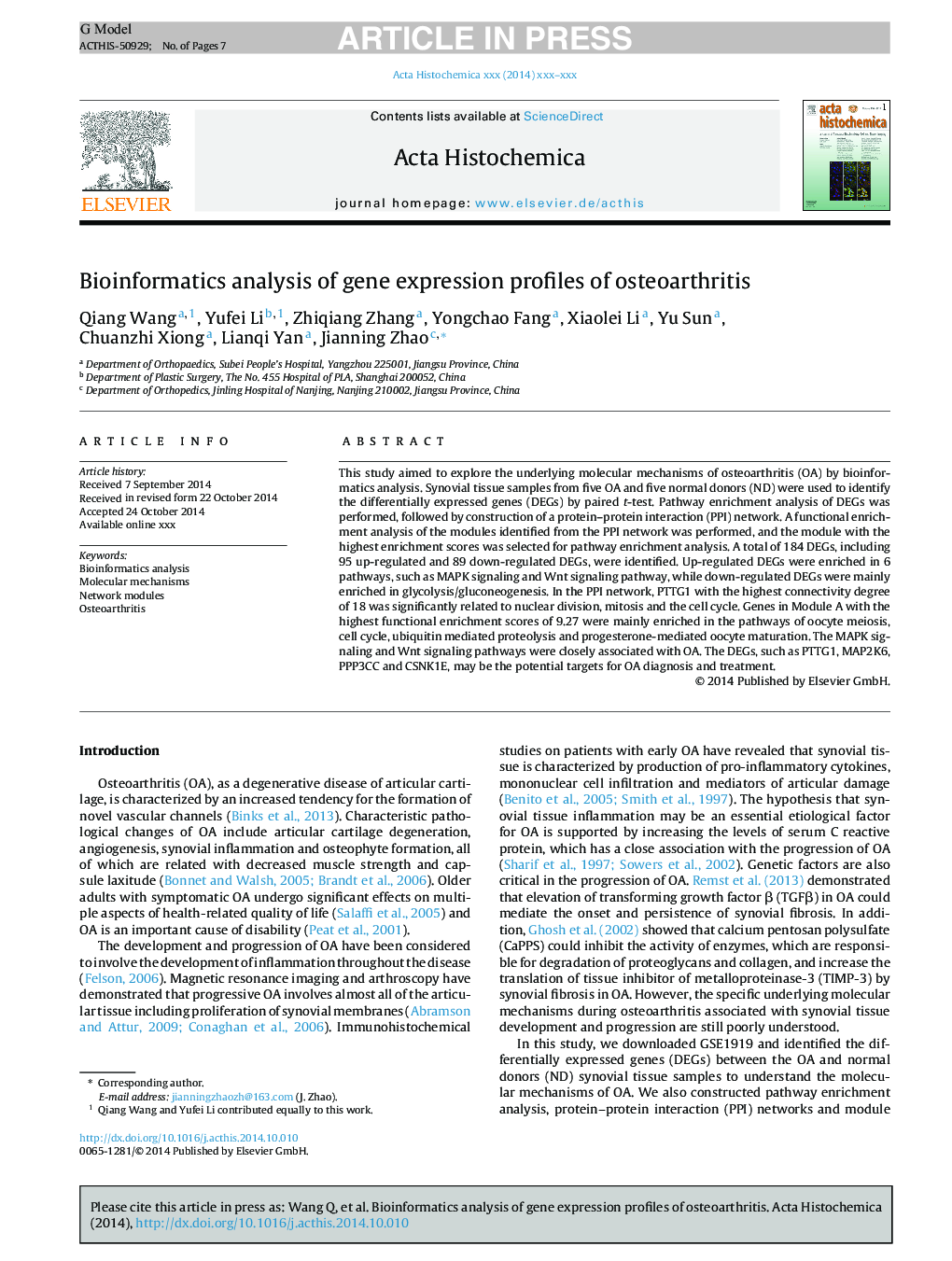| Article ID | Journal | Published Year | Pages | File Type |
|---|---|---|---|---|
| 10747098 | Acta Histochemica | 2015 | 7 Pages |
Abstract
This study aimed to explore the underlying molecular mechanisms of osteoarthritis (OA) by bioinformatics analysis. Synovial tissue samples from five OA and five normal donors (ND) were used to identify the differentially expressed genes (DEGs) by paired t-test. Pathway enrichment analysis of DEGs was performed, followed by construction of a protein-protein interaction (PPI) network. A functional enrichment analysis of the modules identified from the PPI network was performed, and the module with the highest enrichment scores was selected for pathway enrichment analysis. A total of 184 DEGs, including 95 up-regulated and 89 down-regulated DEGs, were identified. Up-regulated DEGs were enriched in 6 pathways, such as MAPK signaling and Wnt signaling pathway, while down-regulated DEGs were mainly enriched in glycolysis/gluconeogenesis. In the PPI network, PTTG1 with the highest connectivity degree of 18 was significantly related to nuclear division, mitosis and the cell cycle. Genes in Module A with the highest functional enrichment scores of 9.27 were mainly enriched in the pathways of oocyte meiosis, cell cycle, ubiquitin mediated proteolysis and progesterone-mediated oocyte maturation. The MAPK signaling and Wnt signaling pathways were closely associated with OA. The DEGs, such as PTTG1, MAP2K6, PPP3CC and CSNK1E, may be the potential targets for OA diagnosis and treatment.
Related Topics
Life Sciences
Biochemistry, Genetics and Molecular Biology
Biochemistry
Authors
Qiang Wang, Yufei Li, Zhiqiang Zhang, Yongchao Fang, Xiaolei Li, Yu Sun, Chuanzhi Xiong, Lianqi Yan, Jianning Zhao,
